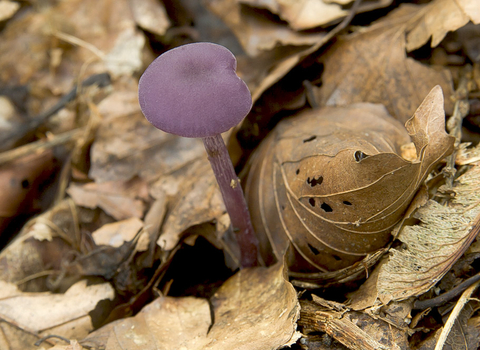
Amethyst Deceiver ©northeastwildlife.co.uk
Amethyst deceiver
The pretty-in-purple amethyst deceiver can be seen growing in the leaf litter of our woodlands during late summer and autumn. Although edible, it looks similar to the poisonous Lilac fibrecap.
